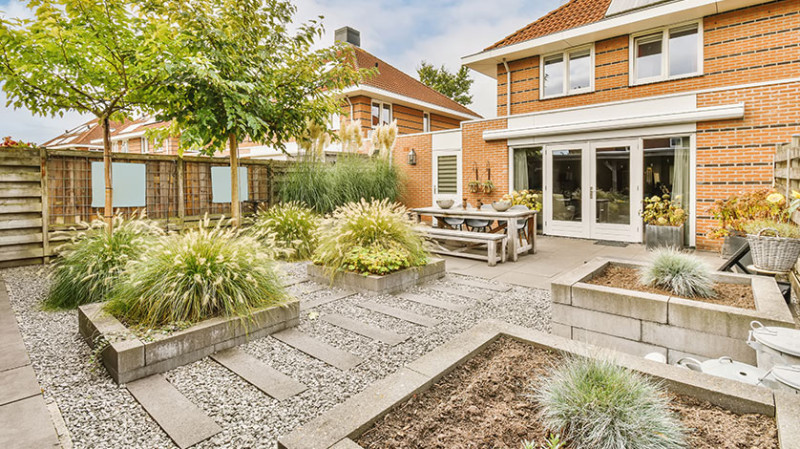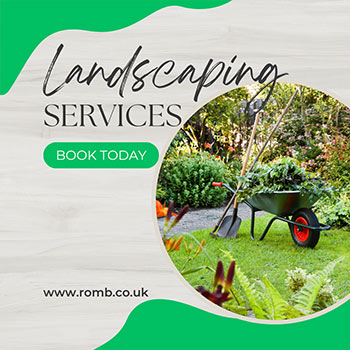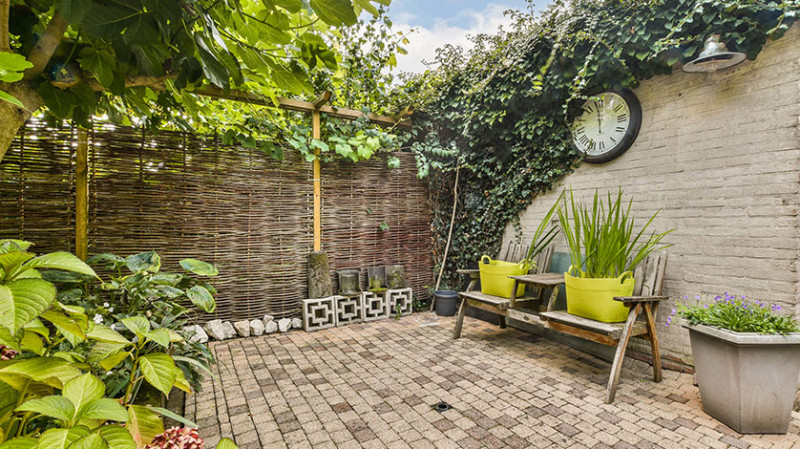
With increasingly unpredictable weather and rising concerns about water usage, many homeowners, garden designers, and professional landscapers across the UK are turning to gravel gardens as a stylish and sustainable solution. A gravel garden or border not only offers a low-maintenance alternative to traditional lawns or flower beds, but it also provides excellent drainage, reduces watering needs, and creates a modern, naturalistic aesthetic. Whether you're an enthusiastic DIYer, a young professional improving your first home, or a seasoned garden designer seeking inspiration, this guide will walk you through how to create a gravel garden or border – the smart way.
What Is a Gravel Garden?
A gravel garden is an area where gravel is used as a surface mulch or groundcover, often interspersed with drought-tolerant and hardy plants like Mediterranean species, ornamental grasses, and succulents. It can be used as a full garden design, a meandering pathway, or a neatly defined border alongside patios or fences. The gravel acts as a weed deterrent, retains moisture beneath it, and gives an airy, relaxed natural look that blends beautifully with modern or traditional UK homes.
Unlike areas covered with bark mulch or traditional turf, a gravel garden doesn’t need frequent watering or mowing. This makes it ideal for regions facing hosepipe bans or those looking to lower their environmental impact.
Gravel gardens are being embraced more and more in UK towns and cities where both private homeowners and landscapers are eager to experiment with sustainable design. They’re also suitable for sloped gardens or awkward spaces where other types of planting may struggle to establish.
Benefits of a Gravel Garden
There’s more to gravel gardens than just good looks. Here are some key advantages:
- Low Maintenance: No mowing, very little weeding, and no fertilising necessary.
- Drought-Tolerant: Gravel helps soil retain moisture and supports plants that thrive with minimal watering.
- Excellent Drainage: Helps reduce pooling and flooding in areas with heavy rainfall.
- Appeal to Wildlife: Gravel gardens support pollinators and beneficial insects with the right choice of plants.
- Versatile Design: Suits cottage-style gardens, contemporary minimalism, Mediterranean-inspired designs and more.
With proper planning and plant selection, your gravel garden will evolve beautifully with each season, developing its own character year by year with little intervention from you.
Step-by-Step Guide: How to Create a Gravel Garden or Border
Whether you're converting a lawn, creating new beds, or replacing paving, setting up a gravel area starts with good groundwork. Here’s how to do it properly:
1. Choose the Right Location
Gravel gardens work best in sunny areas with well-draining soil. South-facing aspects are ideal, particularly if you plan to use Mediterranean or alpine plants. Avoid waterlogged locations unless you have plans to install drainage or raise the bed.
If you’re creating a narrow gravel border alongside a path, fence, or patio, make sure you have access to sunlight for most of the day. Plants like lavender, sedum, and verbena won’t thrive in deep shade.
2. Clear and Prepare the Ground
Start by removing all existing grass, weeds, or surface plants. Dig down about 5–10cm, especially if the area is compacted. This is also your chance to remove roots or perennial weeds that could reappear later on.
We recommend laying a geotextile weed membrane across the area to act as a barrier against persistent weeds, though opinions vary depending on the desired planting style. Some designers prefer no membrane at all to allow self-seeding and natural spread of drought-loving plants.
3. Add Topsoil or Organic Matter (If Needed)
If your soil is sandy or poor, you may be able to plant directly into it after improving drainage with a bit of grit. For heavier clay soils, you may need to improve the structure by mixing in organic compost and sharp sand or grit before adding plants. The goal is to create free-draining conditions for your chosen planting scheme.
4. Select Your Gravel
Choose a gravel type that complements your home and planting style. Sizes between 10mm and 20mm work best for planting borders. Avoid overly fine gravel, as it can clump and restrict airflow to soil. Here’s a quick comparison of popular options:
| Gravel Type | Colour | Best For |
|---|---|---|
| Cotswold Buff | Cream/Golden | Traditional English gardens, brightening shady spots |
| Slate Chippings | Blue, Grey, Plum | Modern designs, excellent for borders |
| Pea Gravel | Mixed browns/tans | Naturalistic or wildlife gardens |
| Polar White | Bright white | Luxury or design-led urban spaces |
Spread your gravel to a depth of at least 5cm (2"). Be sure to tamp it down if you’ll be walking on it regularly, and consider installing an edge border to keep stones tidy.
5. Choose Drought-Tolerant Plants
This is where your creativity can shine. Look for plants adapted to dry conditions and poor soils – characterful, structural, and often with silver or hairy leaves to cope with sun and heat. Here are some top performers:
- Lavandula (Lavender)
- Stachys byzantina (Lamb’s Ear)
- Verbena bonariensis
- Erigeron karvinskianus (Mexican fleabane)
- Eryngium (Sea holly)
- Salvia 'Caradonna'
- Thymus (Thyme)
- Achillea (Yarrow)
Place your plants through the gravel into the soil beneath, making planting holes through the membrane if used. Water well to help them establish.
6. Top Up and Mulch
After planting, brush the gravel back around the base of each plant. This helps retain soil moisture and prevents weed growth, especially in the first year. Over time, the plants will establish and may self-seed, creating the soft, tangled look iconic of gravel gardens.
Tips for Long-Term Success
Although gravel gardens are low maintenance, they’re not zero maintenance. Here are some pointers to keep yours looking its best:
- Water new plants regularly for the first season, then gradually reduce watering.
- Top up gravel as needed every 2–3 years, especially after heavy rains or windy months.
- Remove weeds manually or with a hoe if they appear.
- Cut back perennials and tidy up dead growth at end of season.
- Introduce structure through seating, driftwood, or sculptural features for year-round interest.
In just a few months, your gravel garden will start to mature and flourish, requiring very little upkeep compared to a lawn or densely planted border. It’s the perfect way to combine form with function in a sustainable garden layout.
Inspiration from UK Gravel Garden Experts
Designers have long demonstrated how stunning drought-tolerant gardens can be. Her famous gravel garden in Essex, planted in the 1990s, is never artificially watered and remains an inspiration to gardeners around the world.
Homeowners across the UK – from London courtyards to Yorkshire village homes – are picking up on this trend, using gravel borders to edge paths, complement modern driveways, or mimic Mediterranean holiday gardens right here in the British climate.
Pair your gravel border with corten steel planters, rattan chairs, a pergola, or even solar lighting to create a complete outdoor living space.
Final Thoughts
Creating a gravel garden or border is one of the most sustainable and visually striking landscape projects you can take on. It's achievable through DIY, highly adaptable, and can bring lasting beauty and resilience to your outdoor space. With water conservation and climate-awareness now a core part of modern garden design in the UK, a gravel garden isn't just a style statement – it's a smart investment.
Whether you're a homeowner, architect, or trade professional, now is the ideal time to explore drought-tolerant landscaping and bring a new layer of charm and practicality to your garden.






